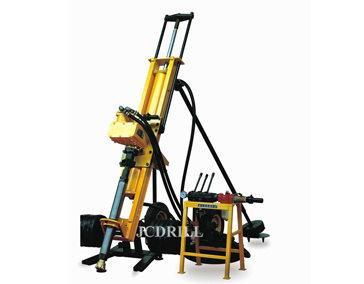Feb. 22, 22
Drilling rigs are used to drill, lower and cement casing in wells and provide the means to perform a variety of ancillary functions such as logging and well testing. Today's drilling rigs are complex and require experienced and well-trained personnel to operate them efficiently. If not selected properly, rigs can result in low rig speeds, poor solids control leading to formation damage, and high final well costs.
In the past few years, rig selection has typically been based on shot grade. A 20,000-foot rig was selected for a 19,000-foot prospect. This means that the rig can safely drill to 20,000 feet. It also means that the rig can perform all the associated activities needed to drill and complete a well at 20,000 feet. Some 20,000-foot rigs cannot meet the rigorous requirements of 20,000-foot drilling. For any of the following reasons.
Large diameter, full-length production casing columns cannot be used because the derrick or substructure does not support the casing load
Mud pumps, pump horsepower, rotary systems, or winches cannot operate in deepwater environments
Ineffective solids control systems for high-density muds
Poor blowout preventer systems
Many companies are putting more effort into rig selection because it is important to the safety, efficiency, and cost of the well.

Rock Blasting Drilling Rig
The proper procedure for selecting a rig is to determine or design the various loads that will be placed on the equipment and select the most cost-effective rig that meets these requirements. To do this, drilling contractors provide detailed rig specifications. When these specifications are compared with good forecasts, the appropriate rig can be selected.
The rig can be subdivided into several component systems used for design and sizing. Although the following groupings of systems are arbitrary, they can be used as the basis for the selection process.
Force
Lifting
Derrick and substructure
Rotation
Circulation
Pressure control
These groups, while broad in nature, cover the most important aspects of rig design requirements.
Drilling Rig
Rig selection made after rig sizing is not completely quantitative. While the goal is to select the most cost-effective rig, a number of factors must be considered.
Technical design requirements
Rig manpower qualifications, i.e. experience and training Track record
Logistics handling
Rig site requirements
Rig selection can be further complicated by poor availability or long-term contract commitments for multiple rigs that require the use of rigs that are not suitable for a particular well.
Drilling Rigs are broadly classified as land and offshore rigs. Each class is further broken down into several types. A rig selection process is conducted to determine which rig best suits your activity. This process takes into consideration three factors:
Capacity
Availability
Cost
While availability and cost are important in the selection process, capacity remains the most crucial criteria to rig selection. Therefore, Rig Sizing, which is part of the Rig Selection process, intends to ensure that the selected rig is capable of handling all anticipated loads during well construction and intervention operations.
&nbs
Truck Water Well Drilling Rig
While some operators have their own Rig Selection templates, it is a good practice to standardize such a process and to integrate it with the organization's engineering system. Our methodology of rig selection follows the below steps:
Perform Offset Wells Analysis and review documentation
Design the well based on surface and target locations in a fashion that minimizes T&D
Establish a list of all the various anticipated loads (Casing running, Testing, Completions,..etc)
Build a risk register to document existing and anticipated risks (a stuck pipe, stuck casing, well control,...etc)
Perform Rig Sizing for the 5 rig systems (Hoisting, Circulating, Power, Rotary, and Well Control)
Identify rig availability in the region
Invite to bid, and select rig based on capacity, availability, and cost (use a Weighted Decision Matrix)
Previous: Evolution of A Drilling Rig
Next: Things You Want to Know about Mud Rotary Drilling Method